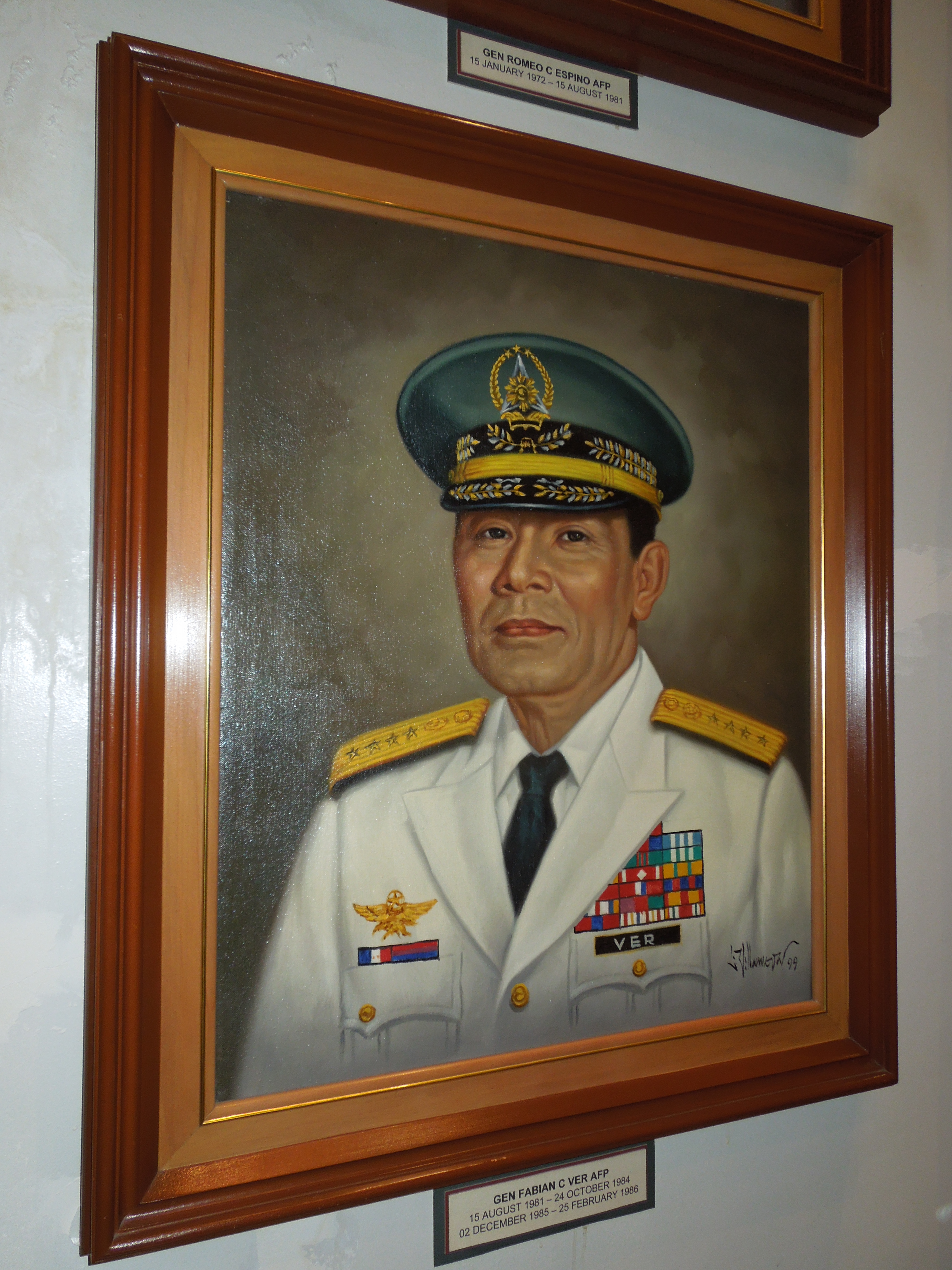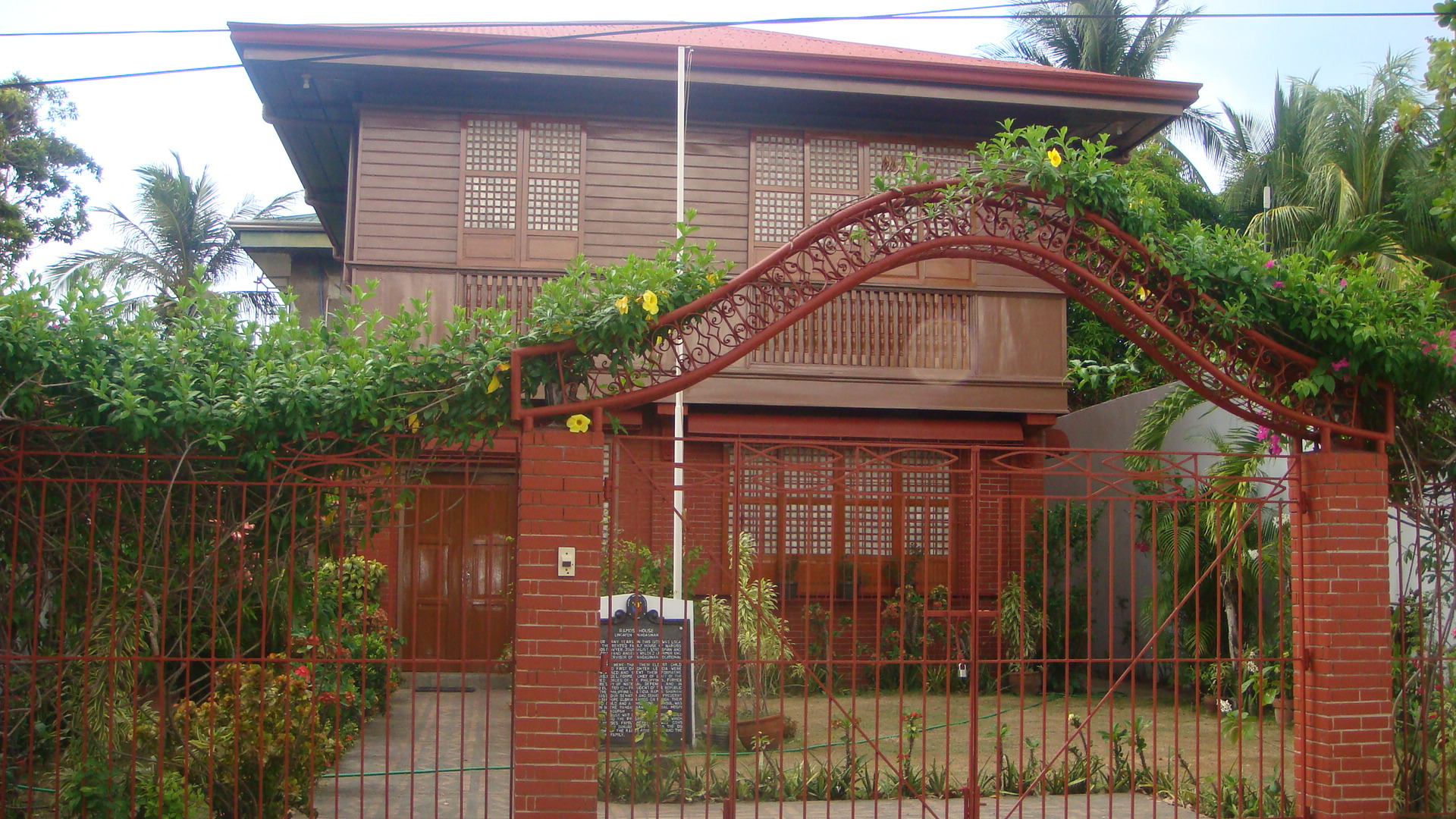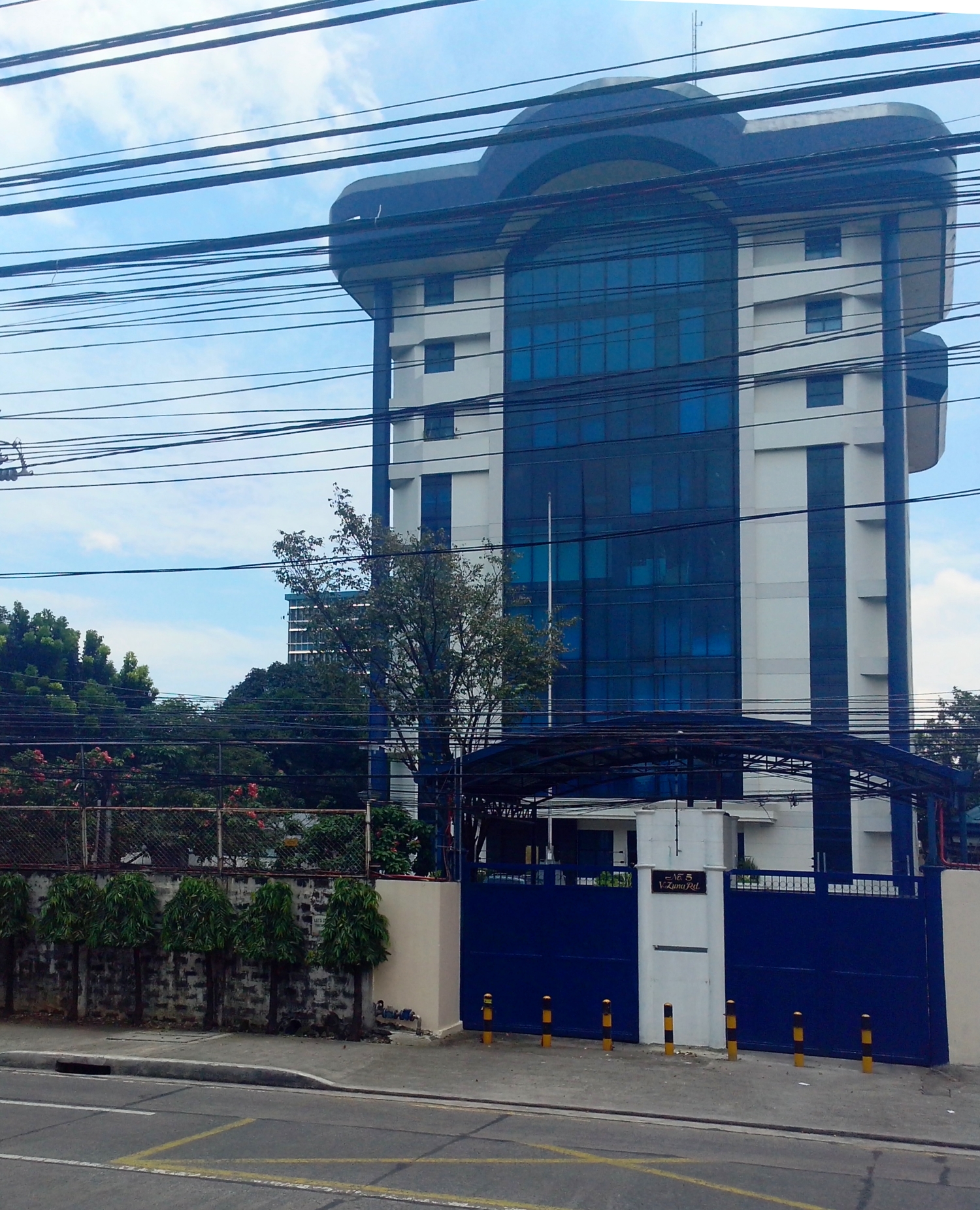|
Reynaldo Mendoza
Reynaldo Arce Mendoza (24 March 1917 - 4 June 2001) was a Philippine Army brigadier general. He was a member of the class of 1940, the author of the Alma Mater song "PMA, Oh Hail to Thee," and former Superintendent of the Philippine Military Academy (PMA). He was also the former Chief of the Intelligence Service of the Armed Forces of the Philippines (ISAFP) and President of the National Defense College of the Philippines (NDCP). During his military service, Mendoza had received several awards and decorations including three Distinguished Service Stars and Presidential Unit Citations from the Philippines, the United States, and the Republic of Korea. He was also recipient of the Ulchi Distinguished Military Service Medal and the Korean War Hero Medal for his command of the 2nd Battalion Combat Team (BCT) of the Philippine Expeditionary Forces to Korea (PEFTOK). Military career Philippine Military Academy Reynaldo Mendoza is a member of the Philippine Military Academy Class ... [...More Info...] [...Related Items...] OR: [Wikipedia] [Google] [Baidu] |
Philippine Expeditionary Forces To Korea
The Philippine Expeditionary Force to Korea (PEFTOK) (Filipino: ''Puwersang Expedisyonarya ng Pilipinas sa Korea'' or ''PEPK,'' Spanish: ''Fuerza Expedicionaria Filipina a Corea'' or ''FEFC,'' ) was the Philippine Army contingent of the United Nations forces that fought in the Korean War (1950–1953). The unit arrived in Korea in August 1950. It was composed of 1,468 troops, and was the fifth largest force under the United Nations Command. The PEFTOK took part in the Battle of Miudong (which was hailed as the first battle won by Filipino soldiers in a foreign soil) Battle of Yultong and the Battle of Hill Eerie. The unit operated alongside the United States 1st Cavalry Division, 3rd Infantry Division, 25th Infantry Division, and 45th Infantry Division. Units/Battalions/Regiments 2nd Battalion Combat Team (BCT) 2nd BCT served in April–May 1954.PEFTOK The "Black Lion" unit was an experienced combat force in the anti-Huk campaign which arrived in South Korea to extend peaceke ... [...More Info...] [...Related Items...] OR: [Wikipedia] [Google] [Baidu] |
Philippine Army
The Philippine Army (PA) ( Tagalog: ''Hukbong Katihan ng Pilipinas''; in literal English: ''Army of the Ground of the Philippines''; in literal Spanish: ''Ejército de la Tierra de la Filipinas'') is the main, oldest and largest branch of the Armed Forces of the Philippines (AFP), responsible for ground warfare and had an estimated strength of 101,000 soldiers backed by 100,000 ready reserves. The service branch was established on December 21, 1935, as the Philippine Commonwealth Army. The Philippine Army has engaged in many conflicts including the ongoing Communist rebellion in the Philippines, the Moro conflict and, alongside other national military forces, in conflicts of international scope. The Commanding General of the Philippine Army is its professional and overall head. Its main headquarters (Headquarters Philippine Army or HPA) is located at Fort Andres Bonifacio, Metro Manila. Background Philippine Revolution (1896–1898) After three centuries of Spanish rule t ... [...More Info...] [...Related Items...] OR: [Wikipedia] [Google] [Baidu] |
Philippines Campaign (1944–1945)
Philippines campaign may refer to various military campaigns that have been fought in the Philippine Islands, including: Spanish colonial period (1565–1898) *Numerous revolts against Spain during the Spanish colonial period; see Philippine revolts against Spain and Military history of the Philippines#Spanish colonial period (1565–1898) *Various actions fought in the Philippines during the Eighty Years' War between Spain and the Netherlands; see "Eighty Years War (1568–1648)" at Military history of the Philippines#Spanish colonial period (1565–1898) *The Limahong Campaign (1573–1575), an attempt by the Chinese pirate Limahong to seize northern Luzon from Spanish authorities *Various actions fought in the Philippines during the Seven Years War (1756–1763) between European powers; see Military history of the Philippines#Spanish colonial period (1565–1898) and Seven Years' War#Other Continents *The Philippine Revolution (1896–1898), called the "Tagalog Revolt" by th ... [...More Info...] [...Related Items...] OR: [Wikipedia] [Google] [Baidu] |
Ernesto S
Ernesto, form of the name Ernest in several Romance languages, may refer to: * ''Ernesto'' (novel) (1953), an unfinished autobiographical novel by Umberto Saba, published posthumously in 1975 ** ''Ernesto'' (film), a 1979 Italian drama loosely based on the novel * Hurricane Ernesto (other), several hurricanes or People *Ernesto Abella, Filipino businessman, politician, and writer *Ernesto Aguero (born 1969), Cuban weightlifter *Ernesto Alonso (1917–2007), Mexican actor, director, cinematographer, and producer *Ernesto Amantegui Phumipha (born 1990), Thai footballer *Ernesto Basile (1857–1932), Italian architect *Ernesto Cesàro (1859–1906), Italian mathematician *Ernesto De Curtis (1875–1937), Italian composer *Ernesto Farías (born 1980), Argentine footballer *Ernesto Figueiredo (born 1937), also known as "Ernesto", Portuguese footballer * Ernesto Guevara de la Serna (1928–1967), also known as "El Che" or "Che Guevara" *Ernesto Geisel (1908-1996), Brazilian pre ... [...More Info...] [...Related Items...] OR: [Wikipedia] [Google] [Baidu] |
Fabian Ver
Fabian Crisologo Ver (born Fabian Maria Trinidad Juan Cirilo Crisologo y Ver; 20 January 1920 – 21 November 1998) was a Filipino military officer who served as the Commanding Officer of the Armed Forces of the Philippines under President Ferdinand Marcos. Early life and education Fabian Ver was born on January 20, 1920, to Juan Ver and Elena Crisologo. He grew up in the town of Sarrat in Ilocos Norte. Ver attended the University of the Philippines and was an alumnus of its reserve program. He also joined the UP Vanguard in 1941. However, the outbreak of World War II disrupted his studies. After the war, he resumed his studies at the University of Manila where he obtained a Bachelor of Law degree and later the University of Louisville where he graduated with a degree in police administration in 1963. He also undertook training in Hawaii and with the Los Angeles Police Department. Military and political career During World War II, he acted as a guerrilla intelligence officer ... [...More Info...] [...Related Items...] OR: [Wikipedia] [Google] [Baidu] |
Fidel Ramos
Fidel Valdez Ramos (, ; March 18, 1928 – July 31, 2022), popularly known as FVR and Eddie Ramos, was a Filipino general and politician who served as the 12th president of the Philippines from 1992 to 1998. He was the only career military officer who reached the rank of five-star general/admiral ''de jure''. Rising from second lieutenant to commander-in-chief of the armed forces, Ramos was widely credited and admired by many for revitalizing and renewing international confidence in the Philippine economy during his six years in office. He is the third oldest to assume the presidency, together with the current 17th president, Bongbong Marcos, next to Sergio Osmeña and Rodrigo Duterte. Ramos rose through the ranks in the Philippine military early in his career and became Chief of the Philippine Constabulary and Vice Chief-of-Staff of the Armed Forces of the Philippines during the term of President Ferdinand Marcos. During the 1986 EDSA People Power Revolution, Ramos was h ... [...More Info...] [...Related Items...] OR: [Wikipedia] [Google] [Baidu] |
Martial Law Under Ferdinand Marcos
At 7:17 pm on September 23, 1972, President Ferdinand Marcos announced on television that he had placed the entirety of the Philippines under martial law. This marked the beginning of a 14-year period of one-man rule that would effectively last until Marcos was exiled from the country on February 25, 1986. Even though the formal document proclaiming martial law – Proclamation No. 1081, which was dated September 21, 1972 – was formally lifted on January 17, 1981, Marcos retained essentially all of his powers as dictator until he was ousted. While the period of Philippine history in which Marcos was in power actually began seven years earlier, when he was first inaugurated president of the Philippines in late 1965, this article deals specifically with the period where he exercised dictatorial powers under martial law, and the period in which he continued to wield those powers despite technically lifting the proclamation of martial law in 1981. When he declared martial law in ... [...More Info...] [...Related Items...] OR: [Wikipedia] [Google] [Baidu] |
Armed Forces Of The Philippines
The Armed Forces of the Philippines (AFP) ( fil, Sandatahang Lakas ng Pilipinas) are the military forces of the Philippines. It consists of three main service branches; the Army, the Air Force, and the Navy (including the Marine Corps). The President of the Philippines is the Commander-in-Chief of the AFP and forms military policy with the Department of National Defense, an executive department acting as the principal organ by which military policy is carried out, while the Chief of Staff of the Armed Forces of the Philippines serves as the overall commander and the highest-ranking officer in the AFP. Founded under the National Defense Act of 1935, while tracing its roots to the Philippine Revolutionary Army, the AFP has played an integral part in the country's history. The AFP has also been involved in various conflicts, such as combatting rebellion against the Communist Party of the Philippines (CPP) and it's attached organizations, the New People's Army (NPA) and the Nati ... [...More Info...] [...Related Items...] OR: [Wikipedia] [Google] [Baidu] |
Ferdinand Marcos
Ferdinand Emmanuel Edralin Marcos Sr. ( , , ; September 11, 1917 – September 28, 1989) was a Filipino politician, lawyer, dictator, and kleptocrat who was the 10th president of the Philippines from 1965 to 1986. He ruled under martial law from 1972 until 1981 p. 189. and kept most of his martial law powers until he was deposed in 1986, branding his rule as "constitutional authoritarianism" under his Kilusang Bagong Lipunan (New Society Movement). One of the most controversial leaders of the 20th century, Marcos's rule was infamous for its corruption, extravagance, and brutality. Marcos gained political success by claiming to have been the "most decorated war hero in the Philippines", but many of his claims have been found to be false, with United States Army documents describing his wartime claims as "fraudulent" and "absurd". After World War II, he became a lawyer then served in the Philippine House of Representatives from 1949 to 1959 and the Philippine Senate from ... [...More Info...] [...Related Items...] OR: [Wikipedia] [Google] [Baidu] |
Superintendent (education)
In the American education system, a superintendent or superintendent of schools is an administrator or manager in charge of a number of public schools or a school district, a local government body overseeing public schools. All school principals in a respective school district report to the superintendent. The role and powers of the superintendent vary among areas. According to Sharp and Walter, a popularly held opinion is that "the most important role of the board of education is to hire its superintendent." History The first education laws in the United States were enacted in the colonial era, when various New England colonies passed ordinances directing towns "to choose men to manage the important affairs of learning, such as deciding local taxes, hiring teachers, setting wages, and determining the length of the school year." The persons responsible were frequently selectmen who had additional government responsibilities. Boston established America's first permanent schoo ... [...More Info...] [...Related Items...] OR: [Wikipedia] [Google] [Baidu] |
Southeast Asia Treaty Organization
The Southeast Asia Treaty Organization (SEATO) was an international organization for collective defense in Southeast Asia created by the Southeast Asia Collective Defense Treaty, or Manila Pact, signed in September 1954 in Manila, the Philippines. The formal institution of SEATO was established on 19 February 1955 at a meeting of treaty partners in Bangkok, Thailand. The organization's headquarters was also in Bangkok. Eight members joined the organization. Primarily created to block further communist gains in Southeast Asia, SEATO is generally considered a failure because internal conflict and dispute hindered general use of the SEATO military; however, SEATO-funded cultural and educational programs left longstanding effects in Southeast Asia. SEATO was dissolved on 30 June 1977 after many members lost interest and withdrew. Origins and structure The Southeast Asia Collective Defense Treaty, or Manila Pact, was signed on 8 September 1954 in Manila, as part of the American T ... [...More Info...] [...Related Items...] OR: [Wikipedia] [Google] [Baidu] |
National Intelligence Coordinating Agency
The National Intelligence Coordinating Agency (NICA) is the primary intelligence gathering and analysis arm of the Government of the Philippines in charge of carrying out overt, covert, and clandestine intelligence activities. The NICA cooperates with friendly countries and government agencies in and out of the country by posting agents as liaison officers. The NICA is led by a Director-General, who reports directly to the President of the Philippines, and is assisted by a Deputy Director-General.PROVIDING FOR THE CREATION OF THE NATIONAL INTELLIGENCE COORDINATING AGENCY. Retrieved on July 24, 2007 Its headquarters is located in |





